LAB REPORT
Science and Technology Making Headlines
Jan. 22, 2021

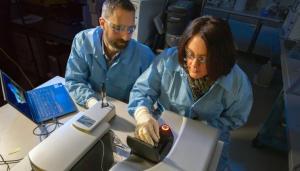
LLNL researchers Nick Fischer and Amy Rasley are characterizing nanolipoprotein particle vaccine formulations using a dynamic light-scattering instrument. Detailed characterization of the nanoparticles provides an important quality control metric for vaccine development. A U.K. company, ConserV Bioscience Limited, and LLNL have agreed to work on developing a universal coronavirus vaccine. Photo by Julie Russell/LLNL (taken pre-pandemic).
The search for a broader vaccine
Lawrence Livermore is helping come up with technology that could make worldwide pandemics far easier and quicker to defeat.
ConserV Bioscience Limited (ConserV), a clinical-stage biotechnology company focused on developing vaccines that protect against endemic and emergent infectious diseases, and Lawrence Livermore have agreed to collaborate on the development of a broad-spectrum coronavirus vaccine.
This collaboration brings together ConserV's expertise in identifying antigens and LLNL’s nanolipoprotein particle technology (NLP) delivery system. The vaccine has been designed to provide broad-spectrum protection against coronavirus pathogens of human and animal origin, including but not limited to MERS, SARS and SARS-CoV-2.
The vaccine construct consists of conserved immunoreactive regions from external and internal coronavirus proteins, from each virus genus, encoded in messenger RNA (mRNA). The mRNA constructs will be formulated with Lawrence Livermore's proprietary NLP vehicle prior to injection, allowing freeze drying of both components separately, improving storage and transport conditions required compared to other mRNA vaccine products.


LLNL researchers have found that the current locations of many planetary bodies in the solar system are not where they originally formed. Image courtesy of NASA.
Hitting rewind on the solar system
The solar system has been reshuffled by gravity since it formed billions of years ago. Jupiter and Saturn were partly the culprits, since the immense gravity of each of these gas giants was enough to send things flying out of order.
Scientists from Lawrence Livermore National Laboratory are trying to reconstruct the nascent solar system by studying the unique signatures of isotopes found in meteorites that escaped the asteroid belt between Mars and Jupiter. These are most of the meteorites that have fallen to Earth.
Revealing the stuff that made up these meteorites gave away that the asteroids they broke off of — at least a hundred of them — formed in the near and far reaches of the solar system.
The asteroid belt is swarming with millions, possibly billions, of asteroids and meteorites, from tiny fragments to monster space rocks like dwarf planet Ceres. It used to be assumed that the asteroids and meteorites in this belt were what was left of a planet that was crushed. They are actually heterogeneous pieces of the solar system whose isotopic and chemical signatures could put together an image of what the solar system must have looked like in its early days.
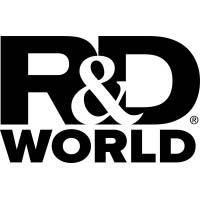
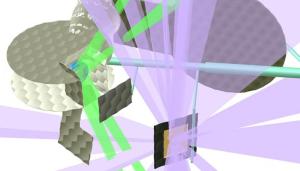
This artist rendering shows the full EXAFS sample, backlighter and laser configuration at Lawrence Livermore's National Ignition Facility.
Getting to the center of it
Lawrence Livermore researchers have developed an X-ray source that can diagnose temperature in experiments that probe conditions like those at the very center of planets.
The new source will be used to perform extended X-ray absorption fine structure (EXAFS) experiments at the National Ignition Facility.
The new platform will allow researchers to perform EXAFS measurements at NIF over a wide range of materials and conditions that were not previously possible at any facility in the world.
At these conditions, where solids can be compressed by a factor of two or more, the materials can have wildly different properties than at everyday ambient conditions. The X-ray source developed in this work will enable measurements of various higher-Z materials that are of importance for the Lab’s mission. This platform also will open up opportunities for scientific discovery in material properties under extreme conditions.

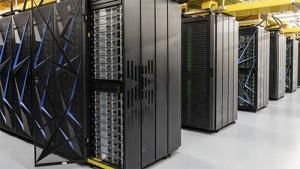
LLNL researchers used Oak Ridge National Laboratory’s Summit supercomputer to study how a specific protein triggers cancer growth.
Using HPC to understand cancer growth
Researchers are running thousands of simulations on the supercomputer Summit to identify how a specific protein triggers up to 30 percent of all human tumors.
A multi-institutional team of scientists is using Summit, America's fastest supercomputer for open science, to get a better understanding of how certain proteins signal body cells to reproduce uncontrollably, triggering cancer.
Led by scientists at Lawrence Livermore National Laboratory, the team recently completed 400,000 Summit node-hours of simulations in an attempt to gain knowledge of RAS, a family of proteins that, when mutated, has been found to drive about 30 percent of human tumors, including some of the deadliest, such as 95 percent of pancreatic cancers and 45 percent of colorectal cancers.
Summit is part of the Oak Ridge Leadership Computing Facility (OLCF), a Department of Energy (DOE) Office of Science User Facility located at DOE's Oak Ridge National Laboratory.
The effort is one of several projects awarded hours on the supercomputer by DOE's Office of Advanced Scientific Computing Research's (ASCR's) Leadership Computing Challenge (ALCC) during the 2019–2020 period, and again for 2020–2021.

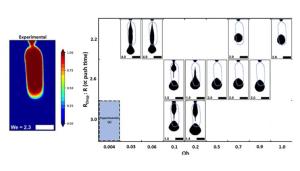
A comparison between the experimentally observed ejected droplet shape at break-up (a) and the simulated droplet shape (b) at various operating conditions approaching the experimental conditions. The simulated droplet shape significantly differs from experiments, highlighting the fact that essential physics appear to be missing from the model. Image courtesy of Andy Pascall/LLNL.
Droplets on demand
A team of scientists from Lawrence Livermore have looked into the dynamics of droplet ejection that could help advance 3D printing. The researchers simulated the ejection process and breakup dynamics of droplets in a novel AM process called Liquid Metal Jetting, or LMJ, which jets molten droplets of liquid metal from a nozzle to 3D print parts without the use of powder or lasers.
First, they built a custom liquid metal 3D printer that could dispense tin droplets and used it as a testbed for droplet-on-demand, freeform metal printing, with high-speed video helping to track the dynamics of the droplets during ejection. Then, thanks to the video analysis, the team built a computational model that can simulate the ejection morphology of the tin droplets, and demonstrated that LMJ, while repeatable and very stable, is very tough to model.
"We don’t currently have a good understanding of all of the physics that occur right when the droplet breaks off from the metal jet. This model points to additional physical mechanisms that might need to be considered to close the gap between experiments and modeling,” explained LLNL researcher Andy Pascall.





